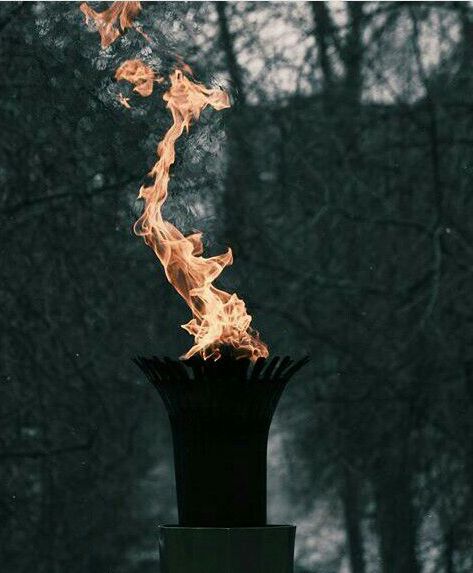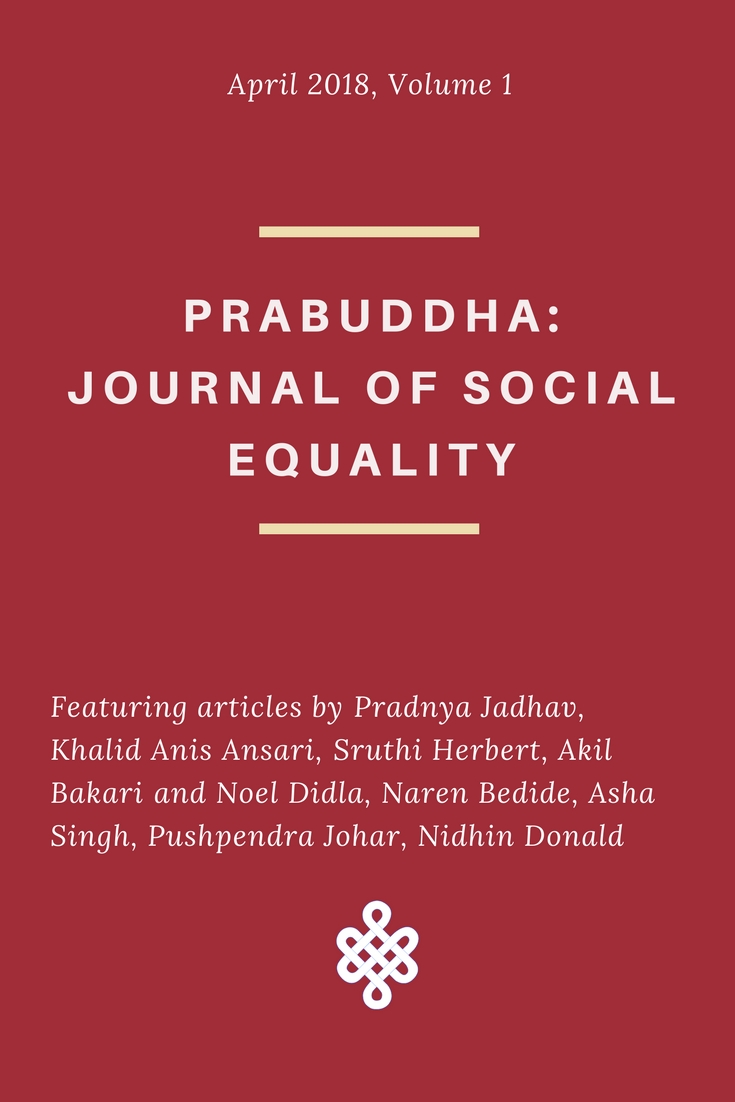Drishadwati Bargi
 “They had the power to make us see and experience ourselves as “other”” ~ bell hooks, Black Looks: Race And Representation.
“They had the power to make us see and experience ourselves as “other”” ~ bell hooks, Black Looks: Race And Representation.
Narrative one: I have known a Dalit man for the past twenty four years of my existence. Like many other first generation beneficiaries of affirmative action policy, he has worked and done well in a public sector bank. Side by side, he has intermittently edited and published a little magazine, books, periodicals and a novel. What is striking about the literary side of his life is the long standing commitment to anti-caste ideas and politics. Since his youth he has vociferously agitated against caste discrimination at work place, fanaticism surrounding Durga Pujo celebration, his relatives’ uncritical acceptance of Brahminical rituals and practices etc. His determination to continue to publish his little magazine, (devoted to anti-caste, anti-communalist writing) in spite of financial hurdles and disappointing response from the Bengali readers, has been triggered by a strong desire to create an alternative platform because most little magazines that are published and consumed by Bhadroloks, hardly raise issues concerning caste and caste based discrimination. However, what is problematic is that this strong anti-caste, anti–brahminical commitment coexists with an equally strong desire to seek legitimacy from the Bhadroloks whom he purportedly seeks to challenge. Thus, appreciation from Bhadrolok intellectuals evokes extreme elation while offers of intellectual camaraderie from Dalits working outside the academia are treated with disdain or skepticism akin to condescension. In his magazine he would rather let Bhadrolok liberals write about caste than let Dalit writers do the same. A particular Dalit writer would not be accepted unless he or she is recommended by a Bhadrolok. This attitude would not, however prevent him from snapping at a reputed upper caste scholar if he/she failed to live up to his image of a proper “anti-caste intellectual”.
Narrative two: This is the story of my octogenarian thamma, my father’s mother. Coming from a well to do rural Dalit peasant family she got married to relatively poorer Dalit school teacher, gave birth to seven children (two of whom died) and lost her husband at the age of forty two. Known for her “unreasonable temper” and “hysterics”, something that had always touched me is her defiant anti-brahminical attitude that she has revealed through her words and the way she has proudly narrated her late husband’s protest against untouchability and casteism at his work place. It is through her nostalgic remembrance of my grandfather’s work that I have got a picture of local resistance against caste that has always existed in rural Bengal inspite of its denial by Bhadrolok culture. However, disturbingly a strange casteism has existed in her throughout her life, which has started manifesting itself gradually. This has been triggered by her zealous consumption of Bengali T.V serials which focus on the lives of upper caste women (either mothers or daughters-in-law) and my mother’s gradual yet steady refusal to comply to the former’s wishes. Given the emotional & financial dependence of my thamma, a widow, on her son (my father), my mother (an upper caste woman) has been seen as an outsider. In such a situation she has taken recourse to a narrative in which she has started claiming an upper class, upper caste lineage to counter her present state of impoverishment and what she perceives as discrimination (of course these autobiographical ruminations come braided with stories of the T.V serials she watches). To make matters worse, she has started keeping separate cups for people belonging to other Dalit sub-castes and vigorously practices untouchability during Ekadashi (the day when widows live on vegetarian food). Moreover, she feels particularly joyous when I or my father invite upper caste friends to our home. Noticeably, that generous treatment is not showered on the neighbourhood Dalit kids.
Narrative three: Due to the acute absence of serious engagement with caste in the institution where I have studied for the past five years, I have personally attempted to discuss caste with fellow Dalit students. Most of them have been reluctant to talk about it. However, this reluctance has many shades and nuances. I have encountered middle class Dalit women who would reveal a wonderful level of intellectual awareness about caste in personal conversation amidst a group of Dalit women, but would remain silent when it comes to talking in the presence of a heterogenous group. It is as if by talking about caste one were insulting his or her upper caste friend or lover. There will be Dalit students who would never broach the topic but during their research they will move towards Dalit Literature. There are Dalits who, in the face of casteist jokes would maintain silence but later, would sever all ties with the offender. Similarly ,there are Dalits who would berate other Dalits for the latter’s lack of “merit” in absolutely casteist language while simultaneously praising affirmative action.
In all the three narratives given above one confronts human behavior in its bewildering and exasperating complexity. How do we judge a Dalit man who has been a dedicated critic of caste and yet is reluctant to treat other Dalit writers with the respect they deserve? How do we judge a semi–literate octogenarian Dalit woman who takes pride in her husband’s anti-caste stance and yet does not treat her neighbourhood kids with the affection they deserve? How do we treat the university educated Dalit woman for her silence in spite of her awareness?

Egoist, hypocrite, opportunist.
Perhaps these three words will readily come to our mind if we try to describe them. Perhaps they do bear a ring of truth around them. Since Dalit movement believes in collective struggle, greater visibilisation, bold assertion of one’s identity, the persons described above fail to live up to the ideal of the movement. In that context do they deserve to be called Dalits? Can they be regarded as reliable subjects of the Ambedkarite movement? Do they have any agency at all? Should we call them our caste enemy?
Let us leave these three narratives for a while and return our gaze to the recent incident in Gujarat where a Dalit girl was burnt alive by members of another Dalit family. Connect it with the Nandigram violence that took place in West Bengal on 14th March, 2007, in which CPI(M) cadres attacked, killed and assaulted villagers protesting against the SEZ project on their land or the pre/post poll clashes in West Bengal. In each of the violent incidents Dalits are the ones who are killing, hurting and injuring other Dalits. The violators and the violated belong to impoverished families, marginal communities. Yet, instead of a bond all they have is intense hatred for each other which propels them to cut each others throat. While anti-caste resistance has highlighted violence on Dalits by the dominant castes it is important to regard intra-caste violence (even when they do not have a specifically caste nature) as part of and working in tandem with the larger structure of caste. Ultimately, who benefits from these violent clashes in which hundreds of Dalits and Adivasis die or kill!
The narratives may seem unconnected but all of them reveal how Dalits humiliate, harm, disrespect and injure other Dalits. I am not, however building up an argument that will prove how divided the Dalit community is, mired as it is in intra-caste bloodbath and conflict of interest. Rather I am trying to find out why is it so easy for Dalits to disrespect another Dalit, to violate the life of another Dalit even when the Dalit is politically conscious. In this situation bell hooks’s notion of internalization of dominant values becomes useful. She writes forcefully how blacks are forced to turn themselves into their “other” in a white supremacist culture. This ideology becomes so powerful that most blacks start hating blackness. Within that crisis situation “loving blackness” becomes an ideological call, a political intervention. This is no essentialist argument. Rather, it calls for a cultural affirmation of blacks along with a deep commitment to anti-racist politics. Dalits, their laboring bodies, which often perform the menial and manual duties for the three upper castes are looked down upon because the dominant culture values intellectual labour and the associated lifestyle. There is a concomitant disavowal of the Dalit–Bahujan culture and this disavowal comes with the assumption that those engaged in physical labour are not good enough for intellectual work and hence need intellectual leadership and guidance. Thus, there is not just a devaluation of the labour, there is a simultaneous devaluation of the bodies engaged in that work combined with a willful disregard for the Dalit’s dignity. It is due to this pervasive disavowal of Dalit-Bahujan culture, institutionalized in schools, universities, mass media that even Dalits who inhabit the same socio-cultural space internalize this pervasive ideology. They start hating themselves and other Dalits. A sense of shame or hesitation grips their mind which prevents solidarity or politics. It is no coincidence that Ambedkar repeatedly stressed the importance of dignity in the struggle for annihilation of caste.
In this context what I am arguing for is a politics that would transform this destructive self-hatred, this blatant disregard for our bodies or being into a productive self-love. A politics that would not just affirm our marginalized status but would also foreground /celebrate our desire, pleasure and happiness. A politics that would not just rage against Brahminical–patriarchal domination but laugh at it. Anger is empowering but it can get co-opted in a masculinist culture which valorizes violence. Moreover, an angry person is always tense. He or she is always on tenterhooks. In contrast laughter is liberating. It can be and has been used by men and women alike. It permits one to be subtle and incisive at the same time. People bond more easily over jokes rather than vituperative remarks. Just as we need the militant voice of a Namdeo Dhasal we also need the voice of Bama or Urmila Pawar who can make fun of domination. Since I am inhabiting a time when violence on Dalit bodies is escalating day by day I would prefer Bama’s Dalit women who turn the simple act of bathing together in a pond into a cultural assertion (since that is the time which Dalit women enjoy in absence of men or upper caste women) rather than Dhasal’s masculinist Ambedkar and his phallocentric revolution. It is only through a recognition of the small freedoms that we enjoy as Dalits that we can struggle for greater freedom. It is only by loving and respecting our difference that we can come out of the self hatred. Brahmanism is pervasive, overpowering, enormous. But it cannot define the totality of our existence.
~
References
Ilaiah, Kancha. Why I Am Not A Hindu: A Sudra Critique of Hindutva Philosophy, Culture and Political Economy, Samya, Kolkata, 2005 (second edition).
Bama, F. Sangati, Trans. Lakshmi Holmstorm, New Delhi, OUP, 2005.
Dhasal, Namdeo. A Current Of Blood: Poems selected and translated from Marathi by Dilip Chitre, Navayana, New Delhi, 2007.
hooks, bell. Black Looks: Race And Representation, Boston, South End Press, 1992.
~~~
Drishadwati Bargi says:
I am a second year M.Phil student at The School Of Women’s Studies, Jadavpur University, Kolkata. I am interested in the intersectionality of caste, gender and sexuality in West Bengal.
Cartoon by Unnamati Syama Sundar.
This article is also published on Round Table India

